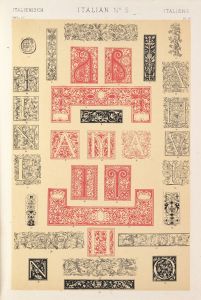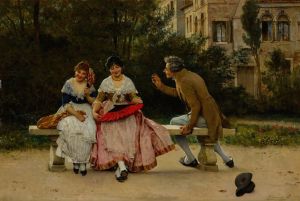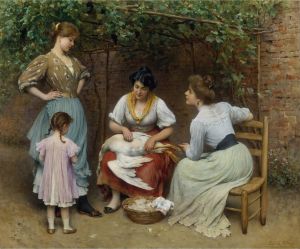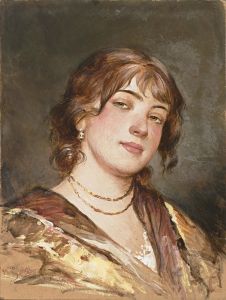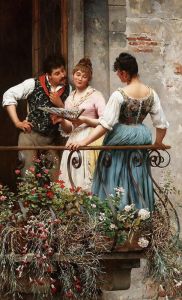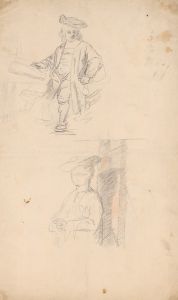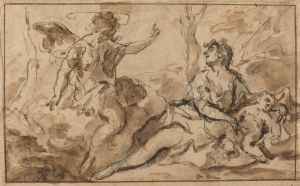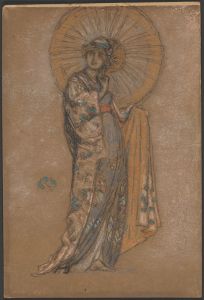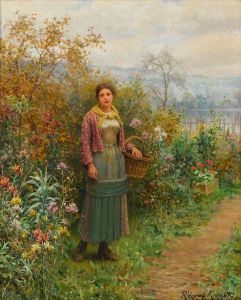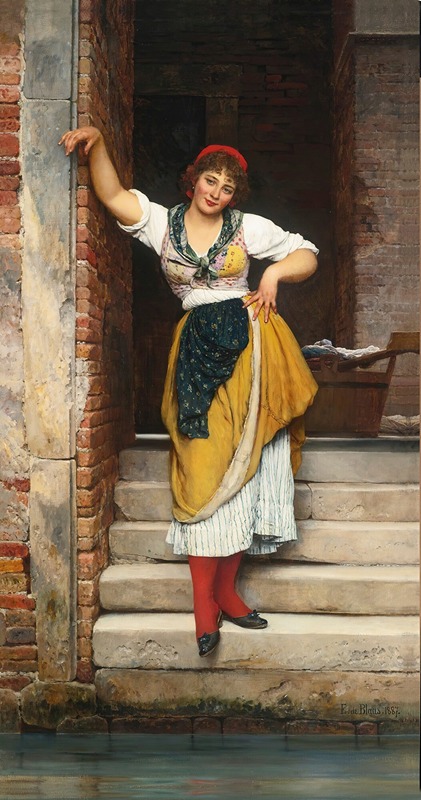
Ninetta
A hand-painted replica of Eugen von Blaas’s masterpiece Ninetta, meticulously crafted by professional artists to capture the true essence of the original. Each piece is created with museum-quality canvas and rare mineral pigments, carefully painted by experienced artists with delicate brushstrokes and rich, layered colors to perfectly recreate the texture of the original artwork. Unlike machine-printed reproductions, this hand-painted version brings the painting to life, infused with the artist’s emotions and skill in every stroke. Whether for personal collection or home decoration, it instantly elevates the artistic atmosphere of any space.
Eugen von Blaas, also known as Eugene de Blaas, was an Italian painter of Austrian descent, renowned for his genre paintings that often depicted scenes of Venetian life. One of his notable works is "Ninetta," a painting that exemplifies his skill in capturing the charm and vibrancy of everyday life in Venice.
Eugen von Blaas was born on July 24, 1843, in Albano Laziale, near Rome, Italy. He was the son of Karl von Blaas, a well-known Austrian historical painter, and was trained in the arts from a young age. Eugen studied at the Academy of Fine Arts in Vienna and later in Venice, where he developed a keen interest in genre painting, a style that focuses on depicting scenes from everyday life.
"Ninetta" is one of von Blaas's works that showcases his ability to portray the human figure with grace and realism. The painting is characterized by its attention to detail and the vibrant use of color, which are hallmarks of von Blaas's style. His works often feature young women in various settings, capturing moments of leisure and interaction, and "Ninetta" is no exception.
The painting depicts a young woman, presumably named Ninetta, in a serene and contemplative pose. She is dressed in traditional Venetian attire, which von Blaas often used to highlight the cultural aspects of the region. The background of the painting is typically rendered with a soft focus, allowing the viewer's attention to remain on the subject. This technique is indicative of von Blaas's ability to blend portraiture with genre scenes, creating a narrative that invites viewers to imagine the story behind the image.
Von Blaas's paintings, including "Ninetta," are celebrated for their technical precision and the warmth with which he portrayed his subjects. His works are often associated with the Academic style, which emphasizes meticulous detail and a polished finish. However, von Blaas's paintings also exhibit a liveliness and charm that set them apart from more rigid academic works.
Throughout his career, von Blaas enjoyed considerable success and his paintings were highly sought after by collectors. His works were exhibited in prestigious venues across Europe, including the Royal Academy in London and the Paris Salon. Today, his paintings are held in various private collections and museums, where they continue to be appreciated for their beauty and historical significance.
Eugen von Blaas passed away on February 10, 1931, in Venice, leaving behind a legacy of art that captures the essence of 19th-century Venetian life. "Ninetta," like many of his paintings, remains a testament to his skill as a painter and his ability to convey the subtleties of human expression and interaction.





